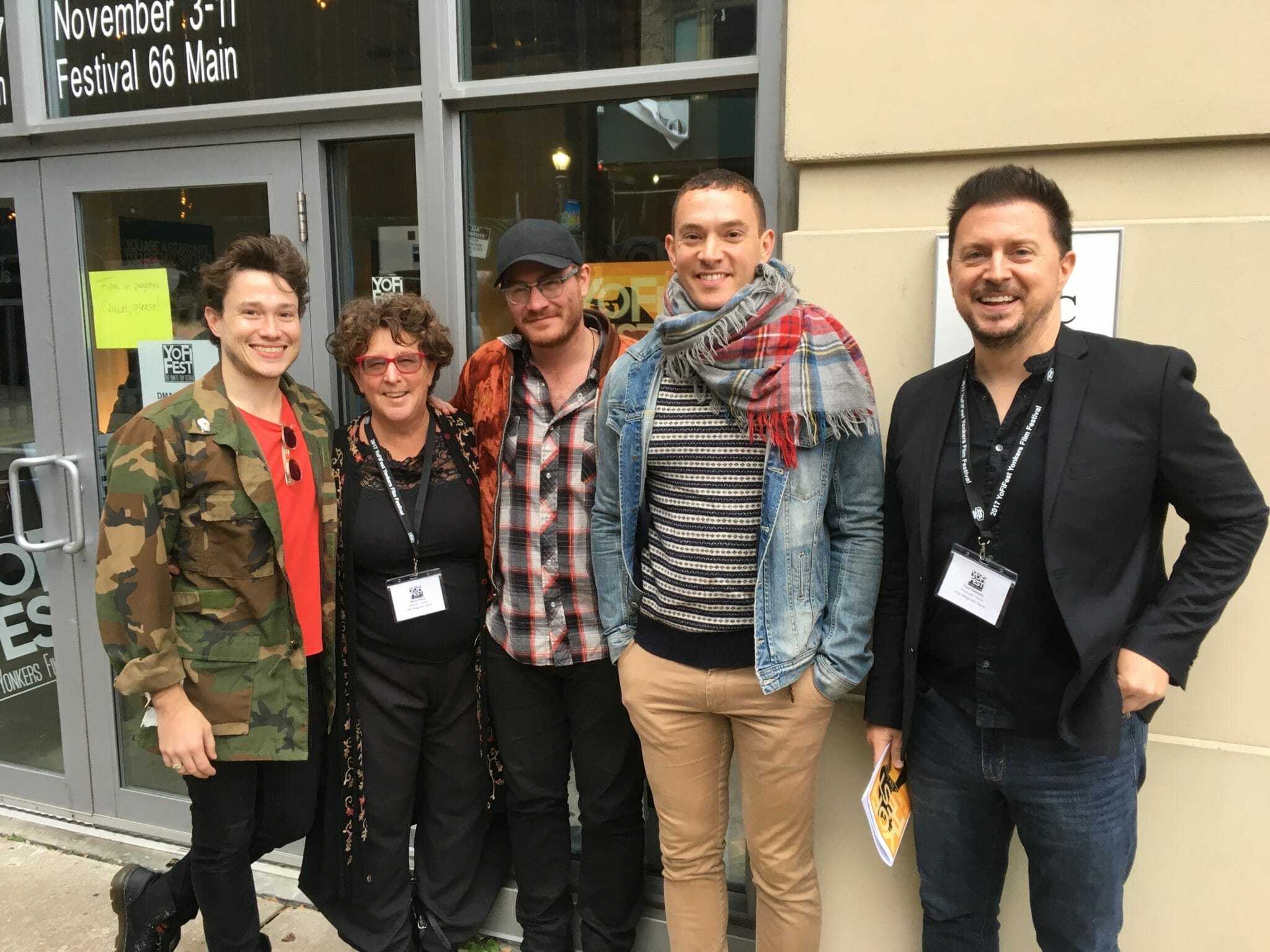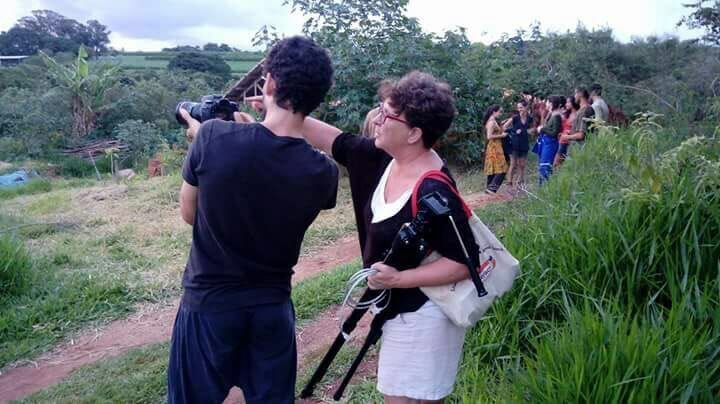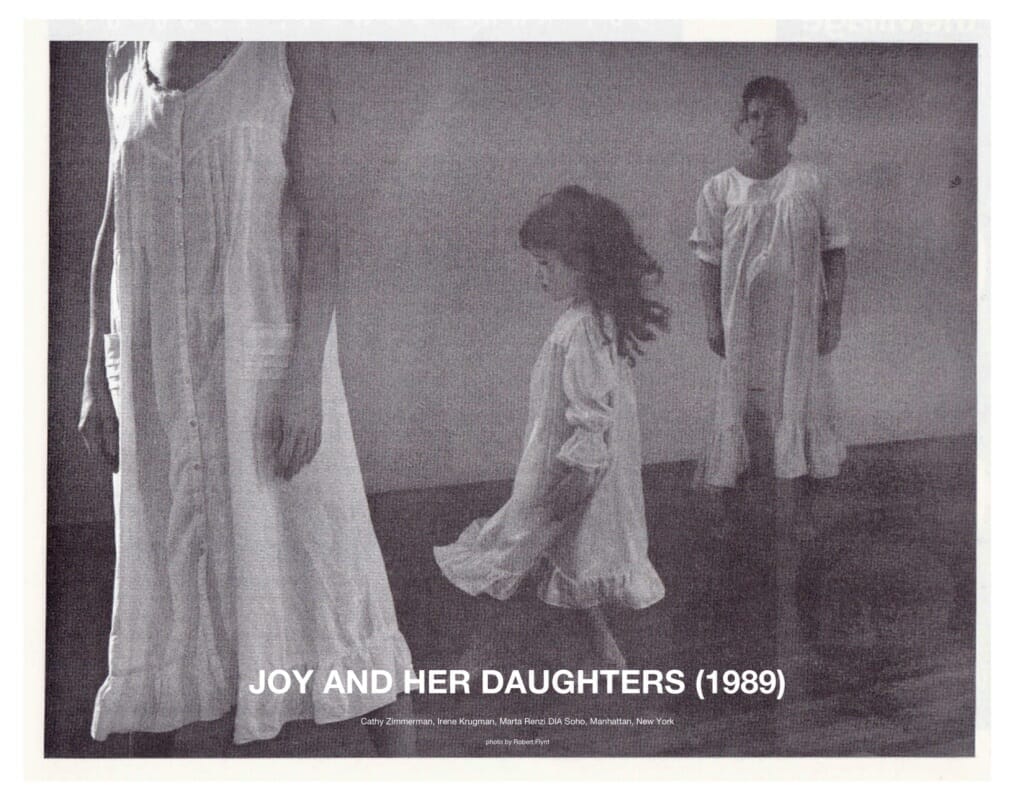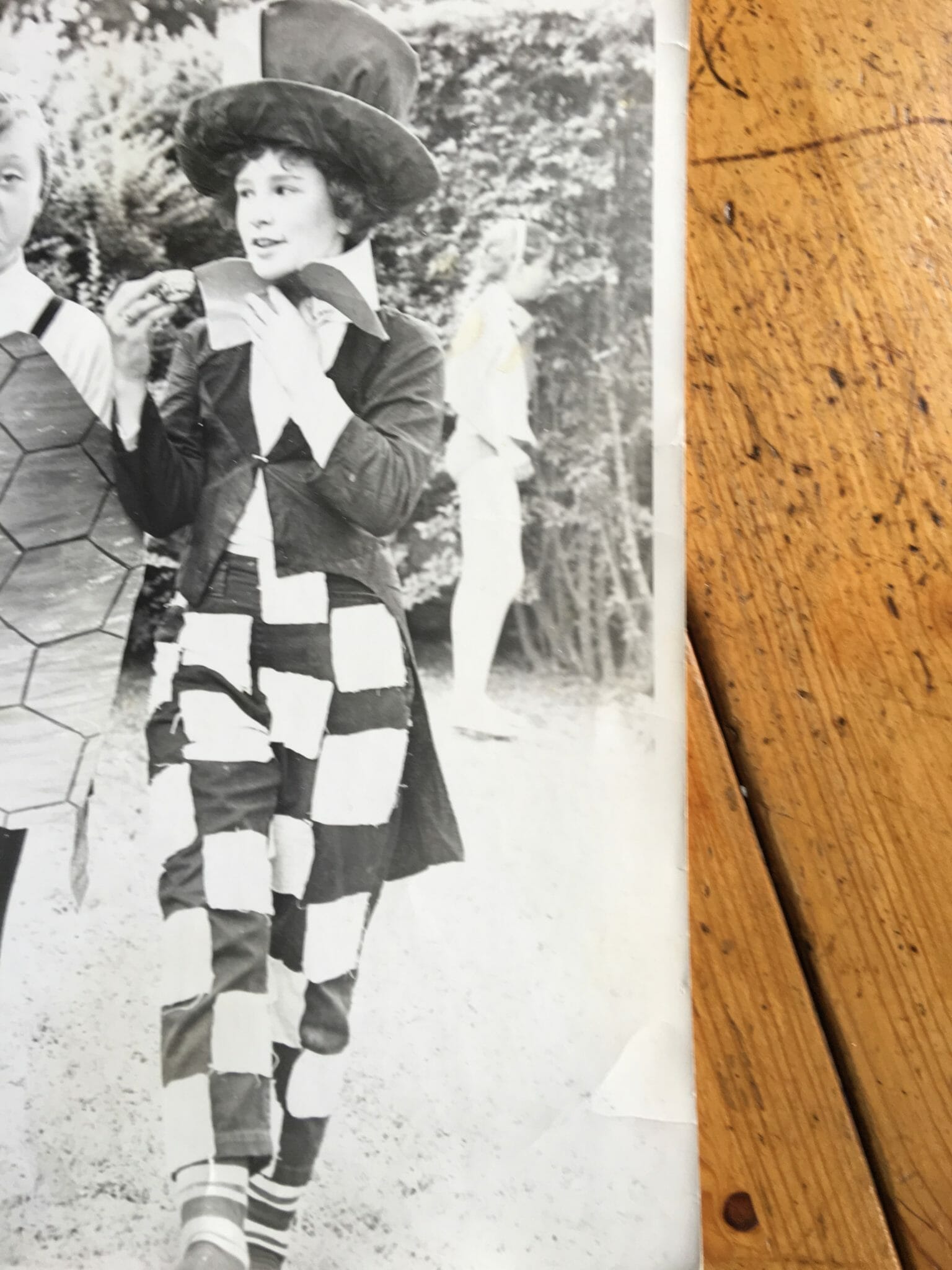Editor's Note: Legendary film director Jonathan Demme (Silence of the Lambs, The Philadephia Story, and more) was a great fan and champion of the pioneering films by dancer/choreographer Marta Renzi. Initially drawn to this work as an example of how dance can be made more accessible to non-dancer audiences, it was quite profound and somewhat of a surprise to see that HER MAGNUM OPUS is more a demonstration of poignant storytelling through film- and an exploration of how death shines a light back on life.
Read the Picture this Post review by young dancer Hayley Ross of HER MAGNUM OPUS here.
Upcoming Film Festivals where you can see Her Magnum Opus--
July 20 - 24 2018 Dance on Camera Festival
PTP: Please tell our readers about your start as a dancer and choreographer?
MR: My first and still most influential dance teacher was Joy Anne Dewey, who taught an extraordinary combination of technique, composition and improvisation in her small basement studio.
My earliest memory of dancing is 7 years old, barefoot in the dewy grass in Joy’s garden, alone with a map and instructions for a solo as Peter Pan. Around age 12, I choreographed a dance - about death - to the soundtrack from Zorba the Greek - and felt honored by a command performance for Joy’s husband who was, to me, a bohemian artist and tastemaker.
Do you have a personal relationship with the beautiful place/setting where Her Magnum Opus was filmed?
That cottage is practically in my backyard, owned by my over-the-fence neighbors. It has the same view - if a bit more expansive - as I do of the Hudson River.
The beginning seeds of Opus were actually the story of a slightly younger woman living in a (different) house in the woods. When another friend with a small house sent me pictures of that prototype in all seasons, I dared to extend the story from fall to spring, imagined it as feature length - and was very glad I could just climb over the fence for shoots that occurred over the course of several months.
When my very generous neighbors gave me permission to use their caretaker’s cottage for all 4 seasons, I got to inhabit the house as she might, filling it with my own toy collection, many of my own tchotchkes.
Our first day of production a friend came with his drone to shoot what became the opening shot of the house from above.
Nothing pleases me more than the association it has with Baba Yaga and other fairy tales from my childhood.
In what ways does this setting unleash the movement/choreography in the film? In what ways did the setting provide a challenge?
The house itself is tiny so it was nearly impossible to get any distance from the action, except outdoors. The constant presence of the river was the opposite —relatively boundless— especially in the final shot.
Note to self: when choosing the next location, allow for distant perspectives!
Please tell our readers about your transition from choreographer to filmmaker- and/or do you consider these as dual and simultaneous careers?
When I was about 28, I was commissioned by Susan Dowling, a visionary dancer-turned-producer at WGBH in Boston, to choreograph a half-hour for PBS, with a respectable budget to support it. Set to the music of Bruce Springsteen, YOU LITTLE WILD HEART featured a cast of local dancers and non-dancers, in locations like a car dealership and a bridge over a railroad track.
Then 8 years later, there was a budget again for MOUNTAINVIEW, which I made “in collaboration with” John Sayles, produced by Susan and my sister Maggie Renzi. The cast for that was mostly my then-company - which is perhaps the equivalent of a “family of choice”, and the music mostly pop music again.
Almost 15 years later, video cameras and editing equipment became cheap enough that any fool could make a movie. So this fool did - more than 25 short films since 2006.
You have mentioned that you were very much involved in your mother’s hospice care. Was that a seminal event/source of inspiration for this film?
My mother died in 2012; my father was failing in 2016, and died the weekend after we started shooting. Anybody who pays attention to life might would do well to be interested in its opposite. Inspiration is a long and meandering process for me, which is to say that intuition is my modus operandi.
In real life—are many members of this cast what one would call your “family of choice”—much as they seem to be in this film for the lead?
Almost everyone in Opus has collaborated with me often over the years, in various projects. A wonderful example is Rob Sorrentino, who dances with Blakeley White-McGuire (a principal dancer with Martha Graham) in the duet in and out of the windows of the little house. Rob first danced with Marta Renzi& The Project Co. in 1983 - at Lincoln Center Out of Doors, at Union Station in Washington, D.C. and on stages all over. He’s also been in some of my films previously: Porch Stories and Incident at Chekhov Creek. What I love about his dancing is how unpretentious it is, and how naturally he acts. His gifts as a partner and his experience with me made it easy for Blakeley to just fall into his arms. And perversely, I want everyone to know that his day job is as a port agent for cruises that come into NY Harbor.
Is this the first time you have worked with both of your sons?
Before I had children, my company was a family, albeit a temporary one. Because we work so intensely and intimately, every project creates its own “family”.
My elder son, Amos, is trained as an actor/singer/dancer and has danced in projects with me before, both live and on screen. Lorenzo The Younger is primarily a musician - responsible for about 40% of the music in Opus. But I’ve also roped him into dancing for me in the past, memorably in a live extravaganza at Battery Park when he was a teenager. Someday I’ll film him doing his eccentric funky dancing in his underwear…
Please give our readers a mental picture of your creative process and how this film came to be?
There was no really screenplay; however the finished film did follow the original treatment I wrote. Planning and intuition. Preparation and improvisation. Casting people who, because they are “family”, can read my mind, filling in the blanks when we choreograph on set…
We started shooting in October of 2016 and the final shoot was May of 2017. I edited all summer and fall. Only one of the dances was created in advance - partly because it was with a dancer who didn’t know me well yet. Most of the final music arrived during the editing - except for the Romanian song that is her song at the first party. Certain music that we did use while shooting, and while editing I was not given permission to use. As it turned out, that created an opportunity for Ljova to write original music that created a more coherent score than there would have been otherwise.
The mechanical toys’ rhythmsin the film seemed to be used as an anchor and place to spin out from visually. Was that your intent?
Each toy does have its own character, rhythm, and relationship to gravity. They’re mostly made of natural material, they run on gravity, not electricity. In fact, the toys are my own collection; those elements are why they’re in my life. We recognize what they do as dancing. What surprised me in the sound mix is the discovery that they’re also a percussion instrument!
One of the hardest tasks I set myself is to make dancing that doesn’t seem like dancing. On any project my goal is for the dancers to “do it so that it wouldn’t stick out even if you did it on a street corner.”
Would you ever describe this as a “silent film”?
It’s a funny expression: silent film. Opus is anything but silent. It’s full of music, the sounds of nature, toys clattering, laughter, baby’s cries. “Silent” means no dialog, text. In MOUNTAINVIEW there’s a bit of dialog in a few scenes, though it’s probably not completely necessary to further the plot. What is does do is follow convention a bit more. After making Opus, I realize it’s asking a lot of an audience to shift their expectations. You can almost feel an audience accepting the challenge about 20 minutes in: Oh, I get it. They’re not gonna talk. Okay, recalibrating…
What is your next project?
Opus premiered in September 2017. In May 2017, I shot In search of lost time - two days in a room designed to be a surreal landscape, with only two dancers, now making its way in festivals, including Black Maria Film & Video, a favorite of mine. Still being edited is one that’s a departure for me. It’s based on the choreography of a Brazilian company I encountered a few years ago and shot for two weekends in a wonderful Ecovila outside Sao Carlos. Since the choreography had already been created, and the family of dancers already existed, I only had to direct - which included asking the dancers to adapt the choreography to outdoors locations and to make the dancing less visible.
Do you have any anecdotes to share about your experiences with audiences at the various festivals where the film has been screened so far?
One person commented that there are no devices, hardly any electricity in fact. That led another to say that the experience of the film is almost in real time - “analog.” People seem to be intrigued by the lack of distinction between a particular dancer’s history and the character they play. Does that mean it’s a documentary? No. But there is an attempt to minimize artifice. Is that what I mean by making the dancing invisible? I like it when people cry after seeing it. Almost always it’s because they lost a loved one recently.
Do you have a sense of how this film impacts dancers vs. non-dancers?
My preferred audience has always been non-dancers, the people who start by saying: “I don’t know anything about dance, but…”
Read the Picture this Post review by young dancer Hayley Ross of HER MAGNUM OPUS here.
HER MAGNUS OPUM continues to be screened at independent film festivals in the US and internationally. Visit and bookmark the webpage for HER MAGNUM OPUS to keep track of screenings near you.






















